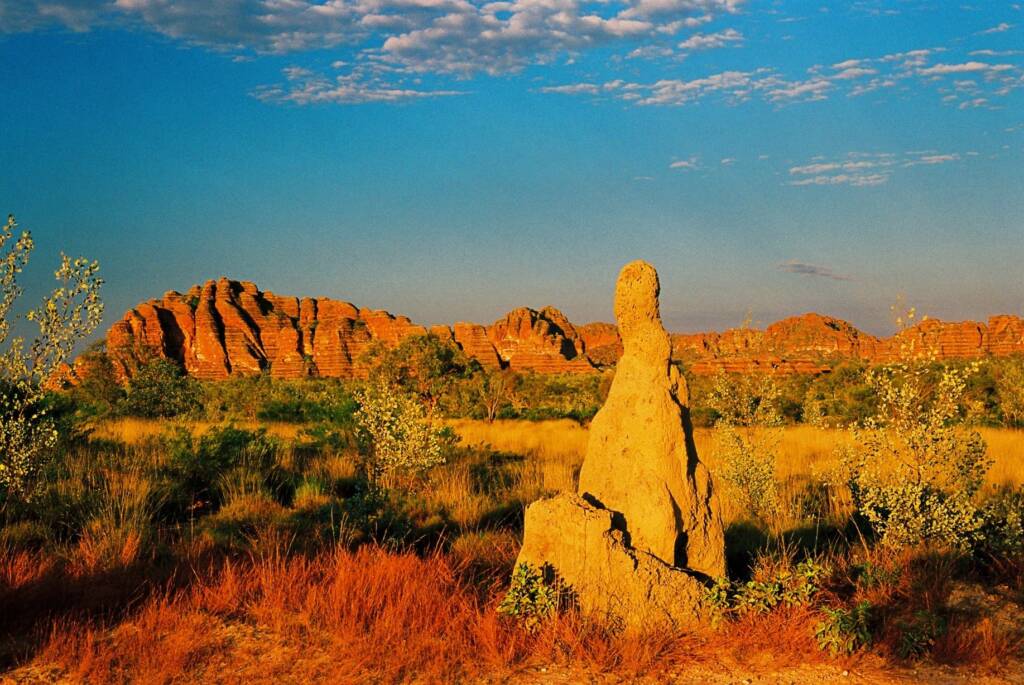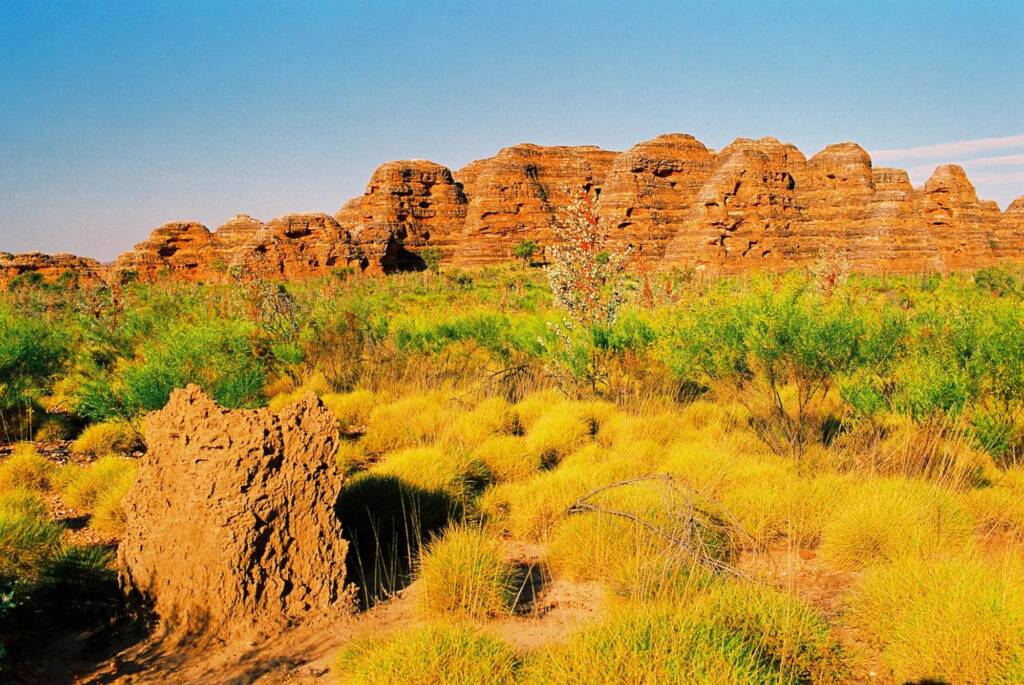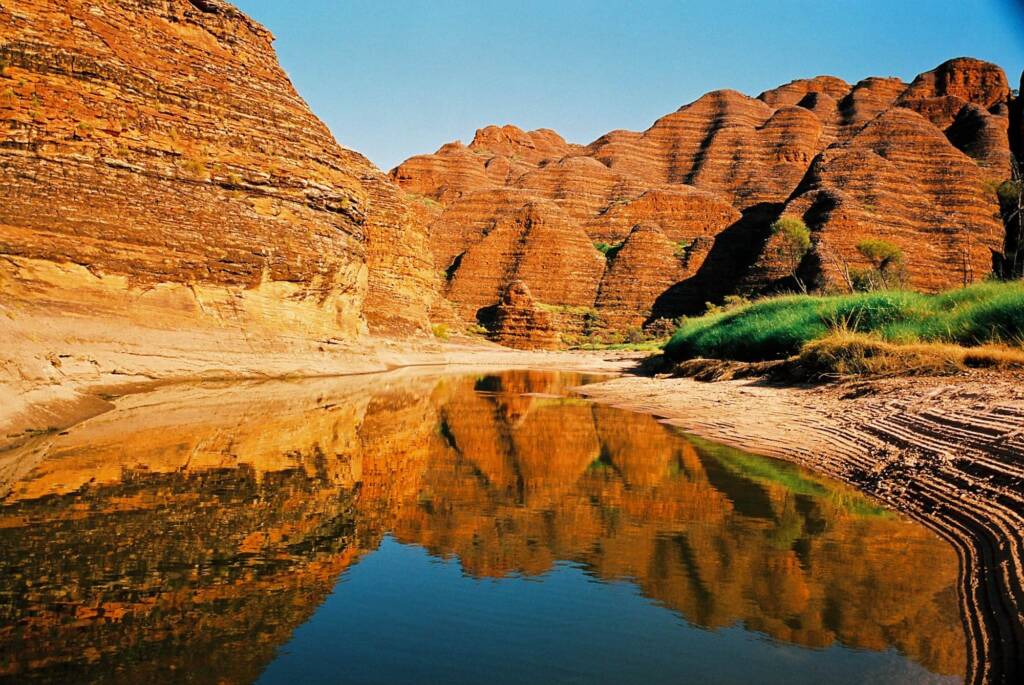The Purnululu National Park is home to the Bungle Bungle range, a striated and beehive shaped formations now known as the Bungle Bungles.
Located just 250 km south of Kununurra and 108 km east of Halls Creek, Purnululu National Park encompasses an area of 239,723 ha, in the Kimberley region of Western Australia. This stunning UNESCO World Heritage listed site is internationally renowned for the Bungle Bungle Range, a deeply dissected landscape of sculptured rocks, rising 250 metres above the surrounding semi-arid savannah grasslands.

These spectacular beehive-shaped karst are Devonian-age quartz sandstone eroded over a period of 20 million years into a series of beehive-shaped towers or cones and whose steeply sloping surfaces are marked by distinctive and regular horizontal bands of dark-grey cyanobacterial crust (single-celled photosynthetic organisms).
The Bungle Bungle range is the sediment of an ancient river bed. The sediment having been laid down in layers, compressed into sandstone and eventually lifted up to form a mountain range.
The range was created by a unique depositional processes and weathering over the many millions of years. This natural process have resulted in these towers with their spectacular black and orange banded appearance. Composed mainly of soft and fragile sandstone, the naturally striped rocks, have distinct horizontal layers of orange-red bands which are coloured by iron and manganese, while the grey-black stripes are a cyanobacterial crust.

This dark layers get their colour from extensive colonies of single-celled microbes known as cyanobacteria, that live on the surface of the rock. The cyanobacterial bands are up to several metres wide, whilst only being a few millimetres thick. Cyanobacteria are one of the oldest forms of life on the planet, a type of bacteria that produces its own nutrients through photosynthesis. Cyanobacteria do not live on the orange layers, which are thought to be too dry to support the microbes.

Because of its remote location, the Bungle Bungles was only known to the Aboriginal people, who have lived in the region for many thousands of years and has long been significant to them as seen through the many ancient Aboriginal rock art and burial places. Whilst the early cattle ranchers in the area knew about the rock formations, it wasn’t until a television film crew who were in the region in the early1980s to do a documentary on the Kimberley, were tipped off about the unusual geological features, that the world in officially came to discover the spectacular beauty of the Bungle Bungle Range in 1983. With the huge interest in the region, the Purnululu National Park was established in 1987 and named a World Heritage site in 2003.
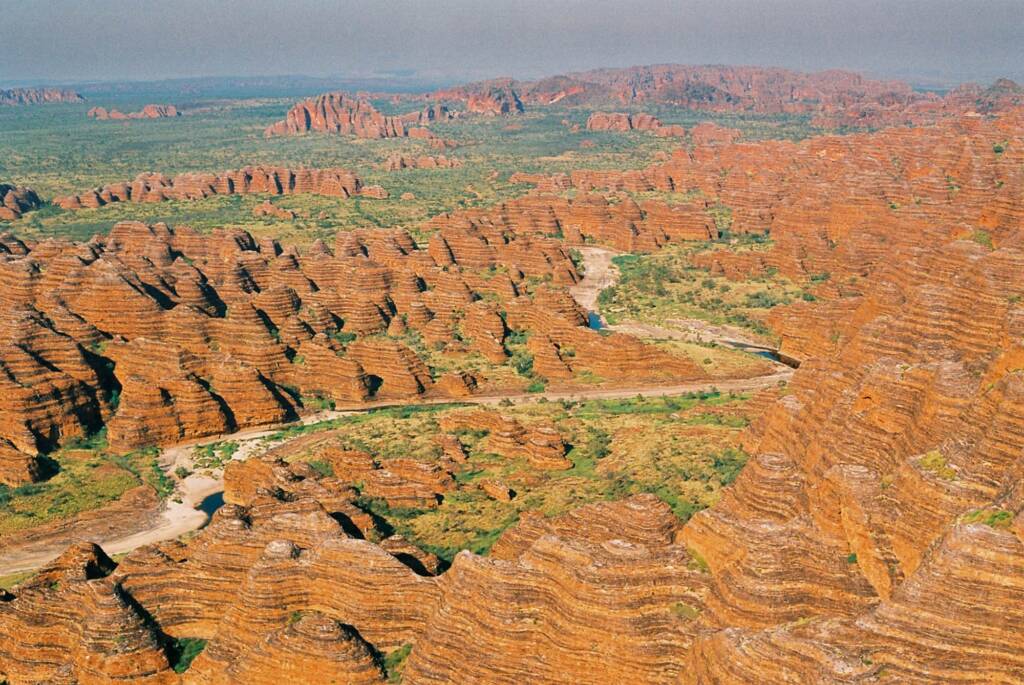
The dramatic sculptured ranges undergo amazing seasonal variation in colour, especially after rain. The intricate maze of towers are accentuated by narrow, sheer-sided gorges and cliffs that soar up to 250 metres high, beautiful seasonal waterfalls and pool, with unique plant life that include the Bungle Bungle Range Fan Palm (Livistona victoriae).
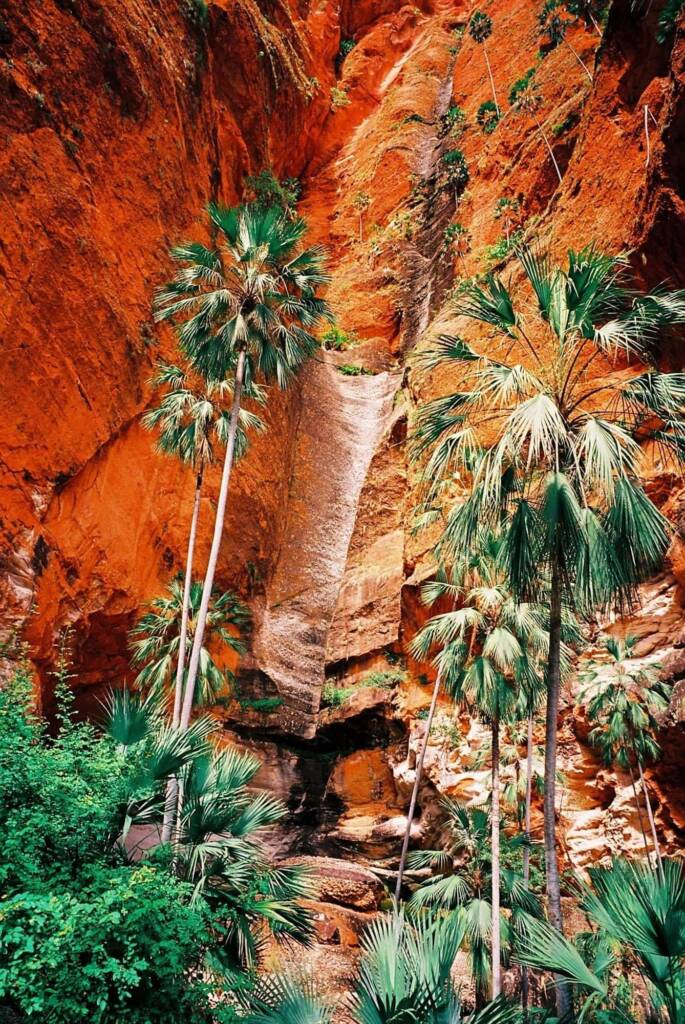
The domes of the Bungle Bungles are located on the edge of the range. For those taking a flight over the national park, you will see new area of domes (cone karst) in the making, the process of erosion continuing towards the centre of the massif. You just need to wait a few million years to see the end result.

Other well sites within the Purnululu National Park, including Cathedral Gorge, Piccaninny Creek and Echidna Chasm.
Purnululu National Park encompasses the Bungle Bungle Range, which is buffered by protected land on all sides, including spinifex and mulga dominated sand plains within the Park to the north, south and east. In the west of the national park, the dominant feature is the Osmond Ranges, that lies within the adjoining Purnululu Conservation Park (PCP). To the south of the national park is the Ord River Regeneration Reserve.

Footnote & References
- Photographs, Bungle Bungles © Hans Boessum
- Purnululu National Park, Parks and Wildlife Service, Government of Western Australia, https://exploreparks.dbca.wa.gov.au/park/purnululu-national-park
- World Heritage Places – Purnululu National Park, Parks and Heritage, Australian Government, https://www.dcceew.gov.au/parks-heritage/heritage/places/world/purnululu
- Purnululu National Park, UNESCO, https://whc.unesco.org/en/list/1094/
Western AustraliaThe Batavia Coast and Midwest WA Bungle Bungles – Purnululu National Park Great Southern WA Stirling Range National Park






